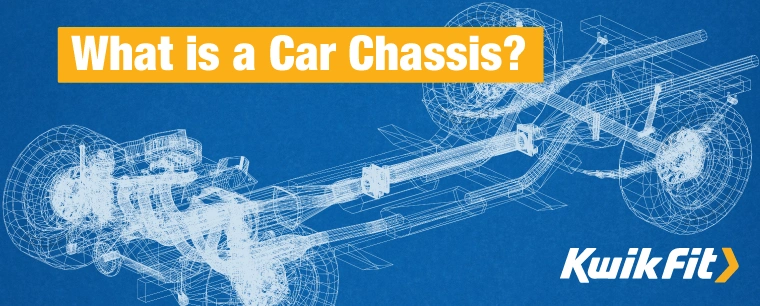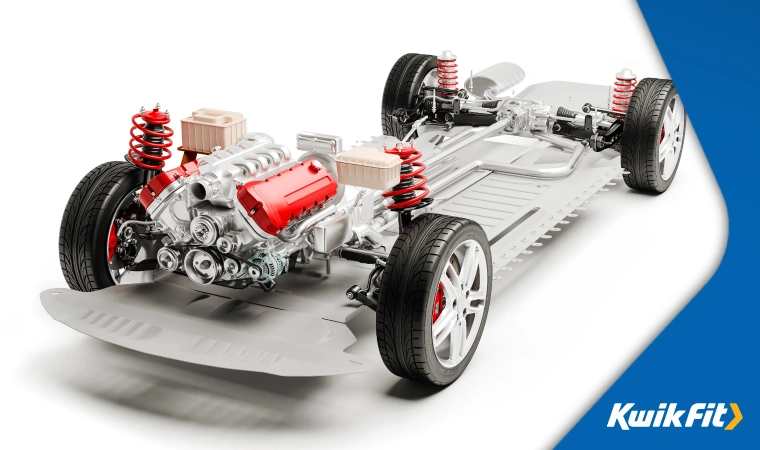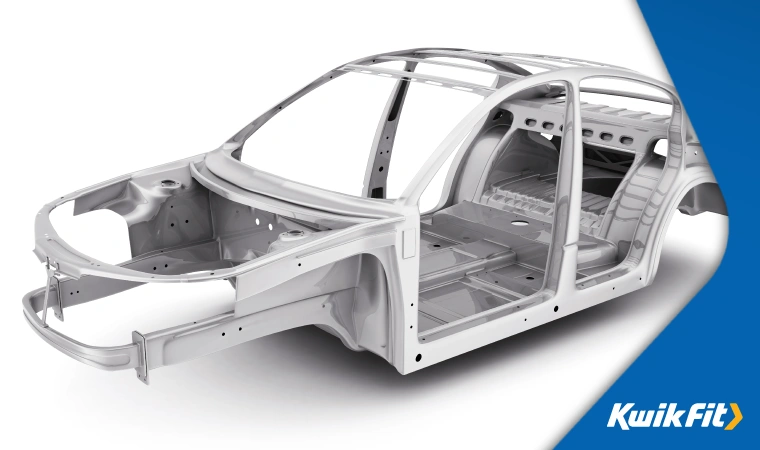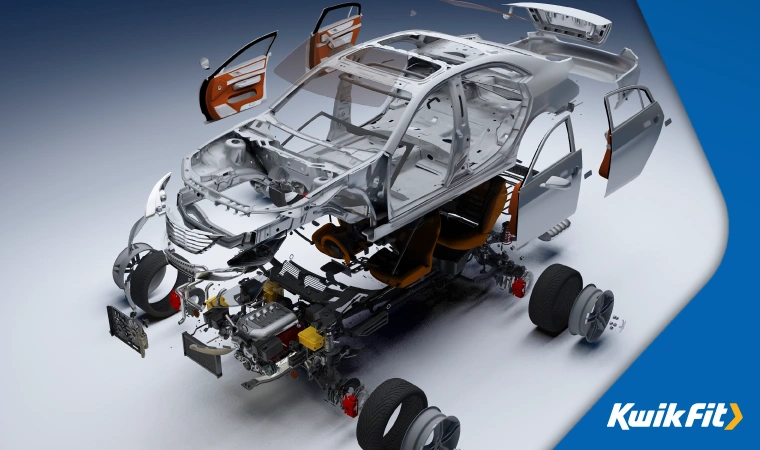What is a car chassis?
| Tuesday 16th March 2021 5:03pm

The world of cars and car technology is a complex one and, sometimes, a contradictory one. Such is the case with the terms ‘chassis’, ‘frame’, and ‘platform’. What exactly is a car chassis? And what’s the difference between a car chassis and a frame?
Let’s find out.
What’s the difference between a chassis and frame?
The words ‘chassis’ and ‘frame’ are usually used interchangeably. However, technically speaking, the chassis tends to refer specifically to the load-bearing part of the car’s frame. The horizontal section that supports and connects all the important components of the car. If we were to strip away everything else, the chassis would look something like this:

What is a car frame?
So, the chassis is the load-bearing part of the frame – the ‘frame’, then, is the rest of the structural body of the car. This is what you imagine when you think of cars being put together on assembly lines - the skeleton frame of a car.

While the body isn’t usually significantly load-bearing (except in cases such as armoured vehicles), it is still a vital part of the whole structure of the car. It’s responsible for managing all of the normal forces exerted on the vehicle. These may include things such as:
- The effects of acceleration
- Sudden braking
- Wind speeds
- Dealing with impacts
- The shock cause by things such as hitting potholes
Historically, vehicle bodies and chassis used to be joined by bolting them together, in what is usually called a ‘body-on-frame’ construction – this creates a relatively flexible body, as the nuts-and-bolts fixings will always flex more than a weld would. This slight flexibility is actually beneficial for modern heavy-duty vehicles because of the huge loads they have to deal with. It gives enough cushioning in the system that it stops parts from cracking due to the pressures.
More modern passenger cars, however, are now constructed with a ‘unibody’ design, which is a single, welded body design. This has less flex than a body-on-frame construction but is significantly safer as a passenger car. That’s because body-on-frame passenger cars used to break at all the fixings when they crashed – so even relatively low-impact crashes could cause serious harm to passengers.
Unibody frames, however, are designed to account for impacts – the fact that the whole frame is welded together means that the force of an impact can be spread throughout the whole body. It means that fewer things break and a car is more likely to buckle than to split.
What is a vehicle platform?

Now, you may have heard of a ‘vehicle platform’ (helpfully also known as a ‘frame’) such as the Ford Mini Platform or the Nissan MS Platform. This is a more ambiguous term than ‘chassis’ and ‘frame’ because it doesn’t refer to a specific part of the car. It’s actually a set of shared design and manufacturing elements.
Because it’s so expensive to actually research and develop a car design, manufacturers will often pool resources in order to research a particular type of car. The research will then go into developing a frame, suspension, engine, exhaust, and transmission system that can have different body trim and interiors added. Essentially, the fundamentals of a car are able to be sent to a manufacturer as a complete construction, or as a complete guide – and each manufacturer can then add their own design touches to it.
It’s partly why many modern cars look so similar, but it’s also why many modern cars are so fuel efficient and safe. Moreover, new advancements in assembly and fabrication technology mean that manufacturers can use some elements of a platform, but make changes to a body design much more easily.
So, next time someone mentions a car chassis, maybe you can tell them if they’re actually talking about the right thing!
Any facts, figures and prices shown in our blog articles are correct at time of publication.
Featured Articles
Is it Illegal to Drive With One Headlight?
Saturday 19th July 2025
Wondering if it’s illegal to drive with one headlight? Learn about the safety risks and penalties of illegal blown bulbs and why you should fix them promptly.
Air Con in EVs & Hybrids: Experts Answer Your Questions
Monday 30th June 2025
Does air con drain EV batteries? Can you use the air con while charging an electric car? Find out the answers to these questions & more from Kwik Fit’s experts.
Why Is Your Car Making a Noise? Fixes & Tips
Friday 13th June 2025
When your car starts making unexpected noises, it can certainly be quite disconcerting; it may be nothing to worry about, but here’s what you need to know.









